Abstract
1. Response characteristics of baroreceptors with receptive fields in the pulmocutaneous artery (p.c.a.) were determined in pithed toads by applying pressure steps, ramps, sine waves, and volume infusions into the vascularly isolated and perfused p.c.a. 2. The baroreceptors exhibited phasic and tonic discharge thresholds (30.3 +/- 2.3 and 36.2 +/- 2.8 mmHg respectively) which were above mean arterial pressure values reported for conscious undisturbed toads. They are comparable, in this respect, to non-myelinated mammalian arterial baroreceptors. 3. The maximum-phasic and minimum-adapted discharge frequencies of the p.c.a. baroreceptors were low (30 and 2-3 spikes s-1, respectively), but resembled those reported for mammalian non-myelinated baroreceptors when an adjustment was made for the difference in the temperature of mammalian and amphibian preparations. 4. The sensitivity of the baroreceptor discharge frequency to pressure (delta F/delta P) was estimated from pressure-step and pressure-ramp stimuli. Both estimates were greater than those reported for mammalian systemic arterial baroreceptors after the values were normalized to the maximum discharge frequency of the receptors. delta F/delta P and saturation discharge frequency values estimated from ramp stimuli increased with the dP/dt of pressure ramps. 5. The diameter of the p.c.a. was measured by sonomicrometry in toads anaesthetized with urethane. The diameter pulsation was 7.7 +/- 0.3% of the mean diameter (3.5 +/- 0.1 mm) at a mean pulse pressure of 22 +/- 1 mmHg, and Peterson's pressure-strain modulus was calculated to be 4.0 X 10(5) +/- 0.3 X 10(5) dyn cm-2, which suggests that the p.c.a. is highly compliant, and in this respect is comparable to the pulmonary artery, but not to systemic arteries, in mammals. Baroreceptor discharge began near the point of peak dynamic compliance (dV/dP) and continued as dV/dP decreased. Increasing the rate of infusion reduced the peak dV/dP, but increased the baroreceptor discharge frequency. 6. The response to sinusoidal oscillating pressure stimuli was distorted by rectification. Increasing the frequency of sinusoidal stimulation over the range 0.05-1.0 cycles s-1 reduced the number of spikes per cycle, but increased the mean discharge frequency.
Full text
PDF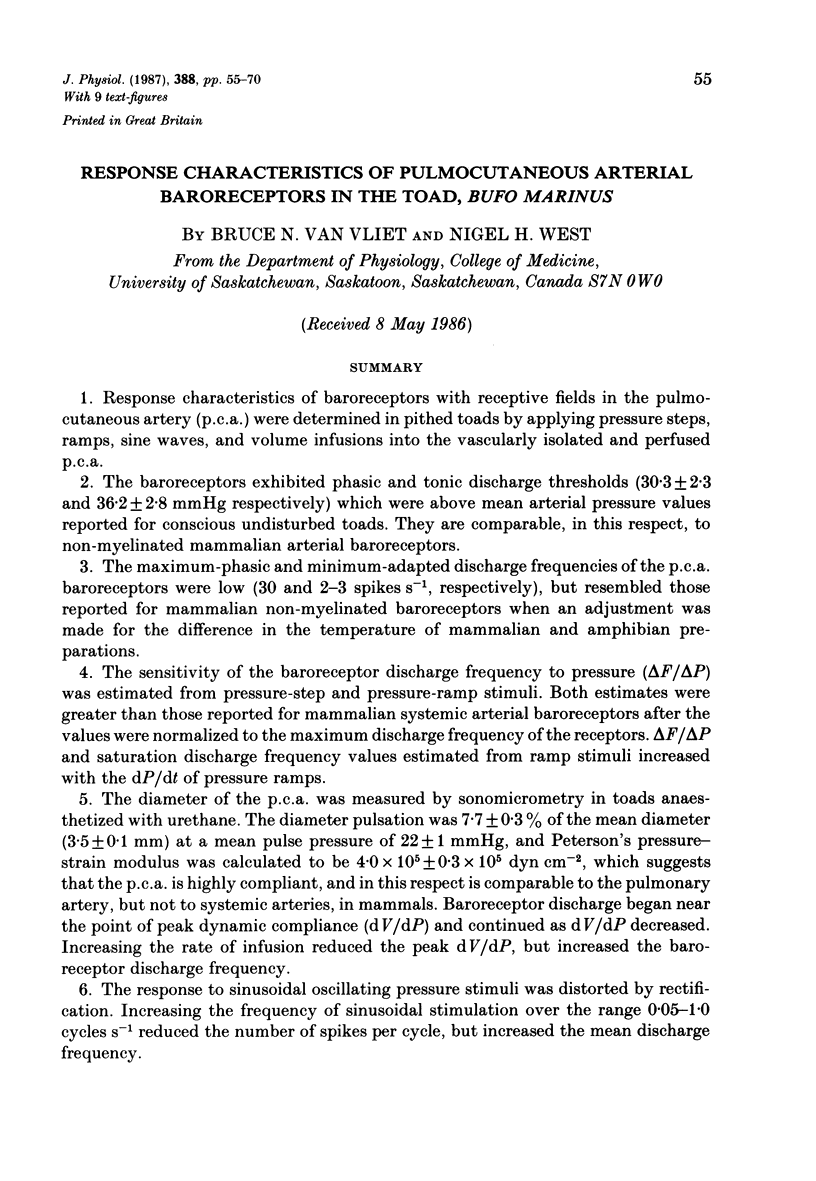
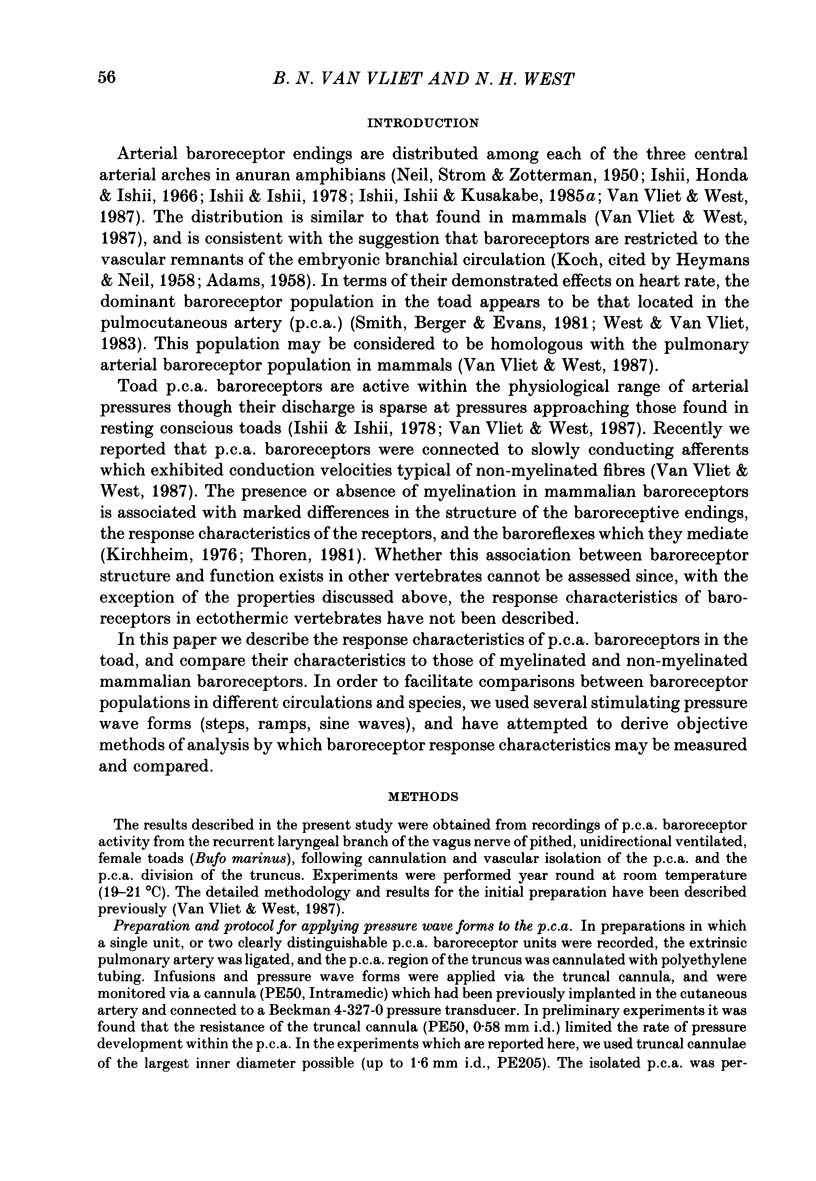
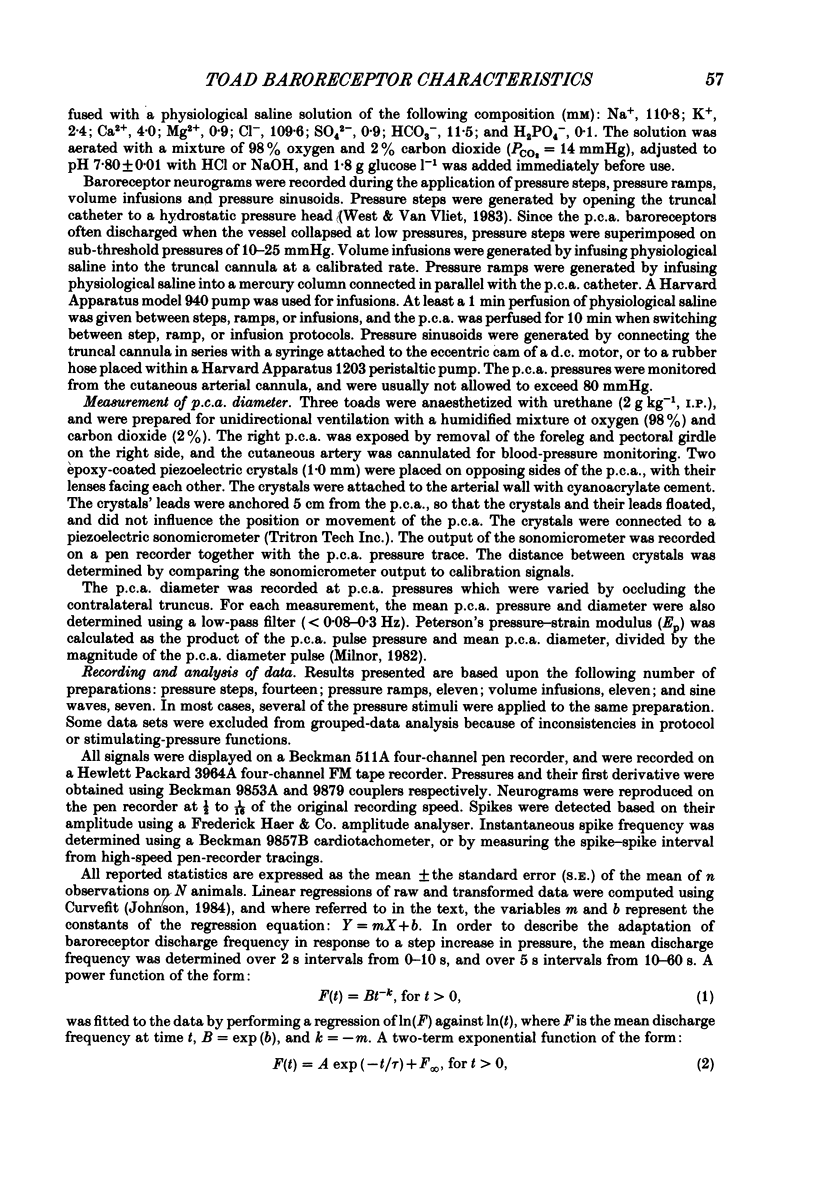
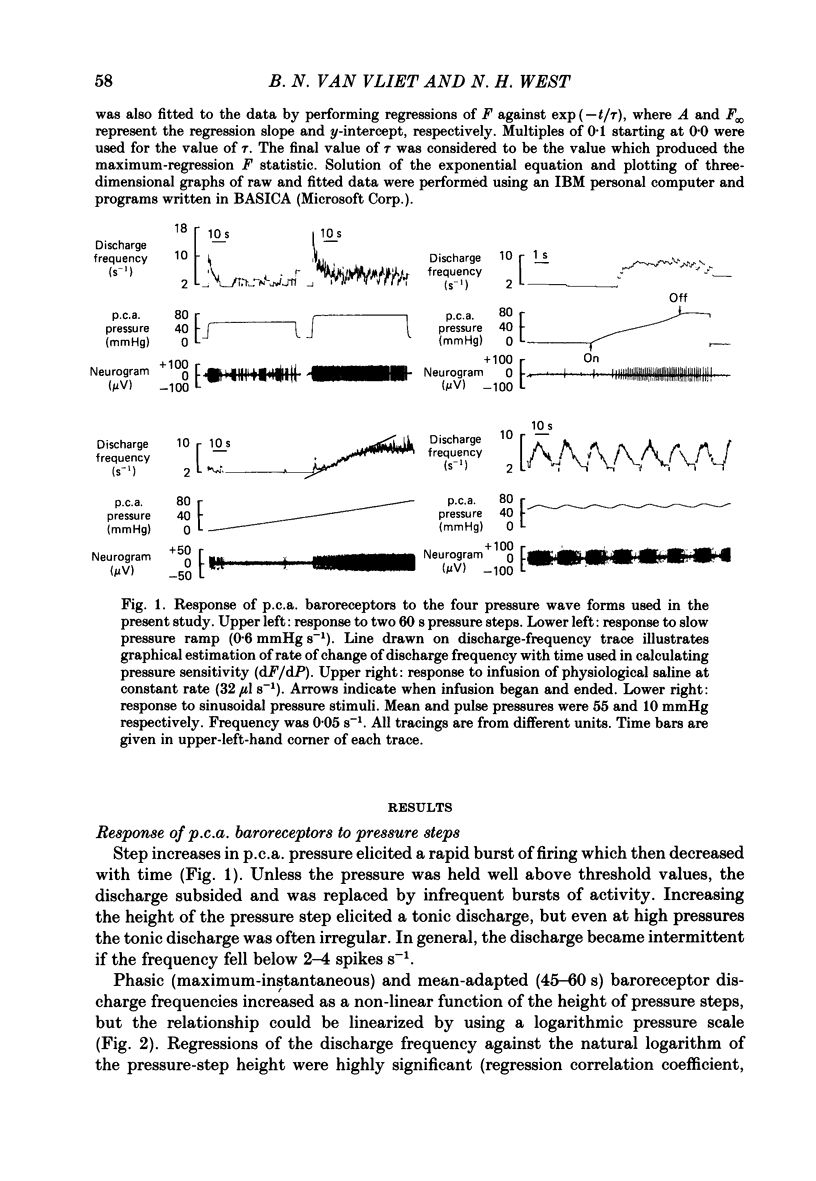
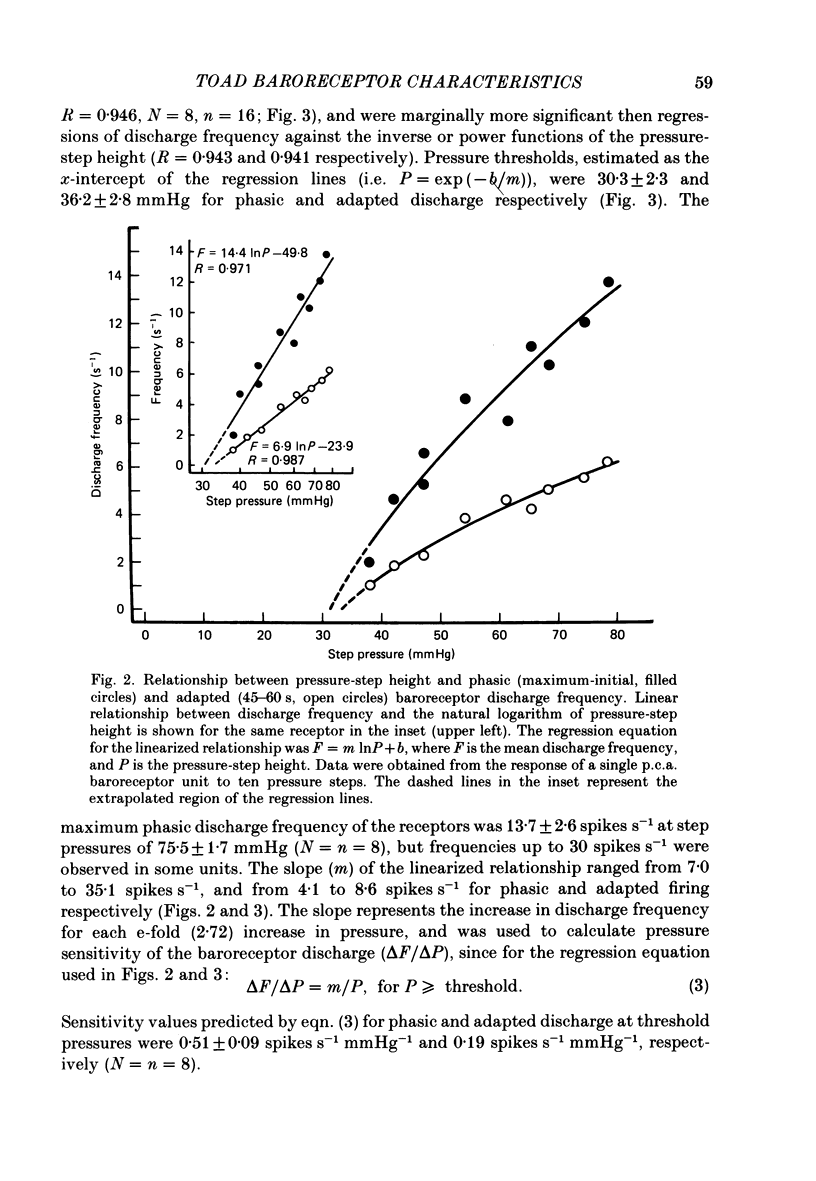
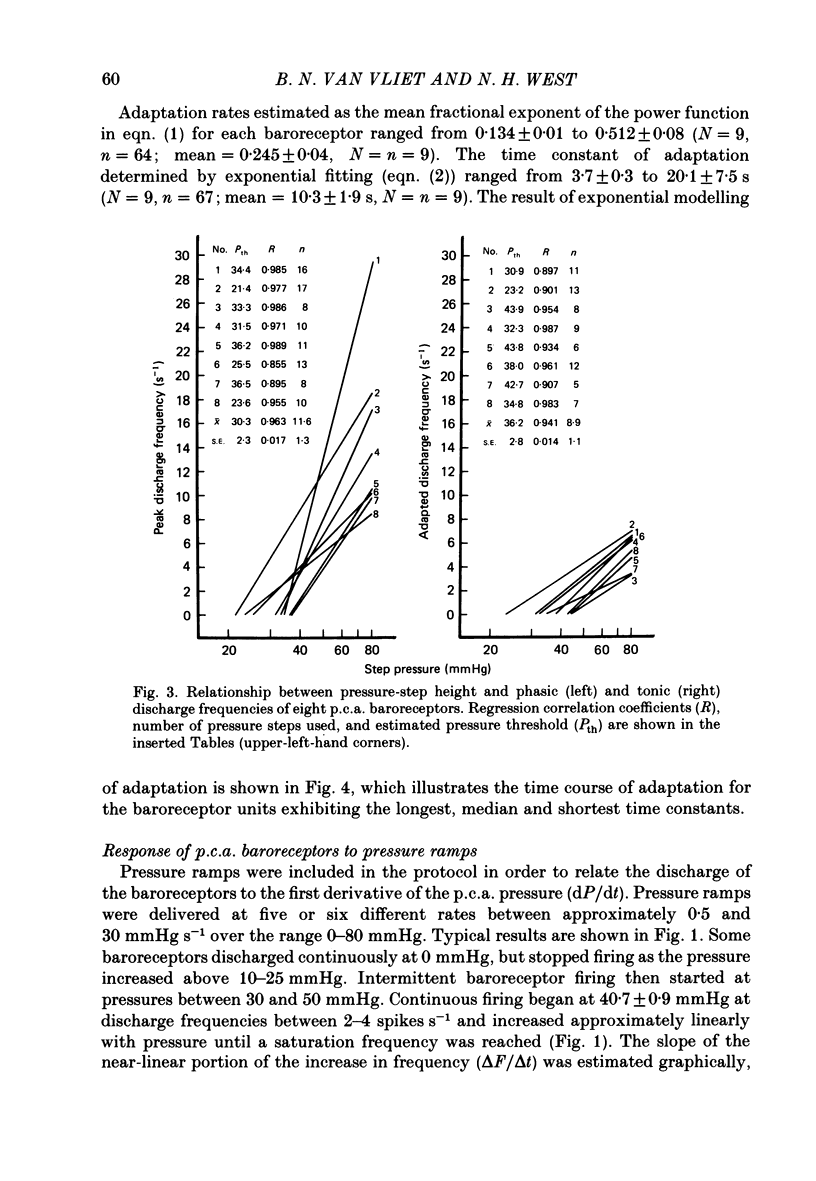
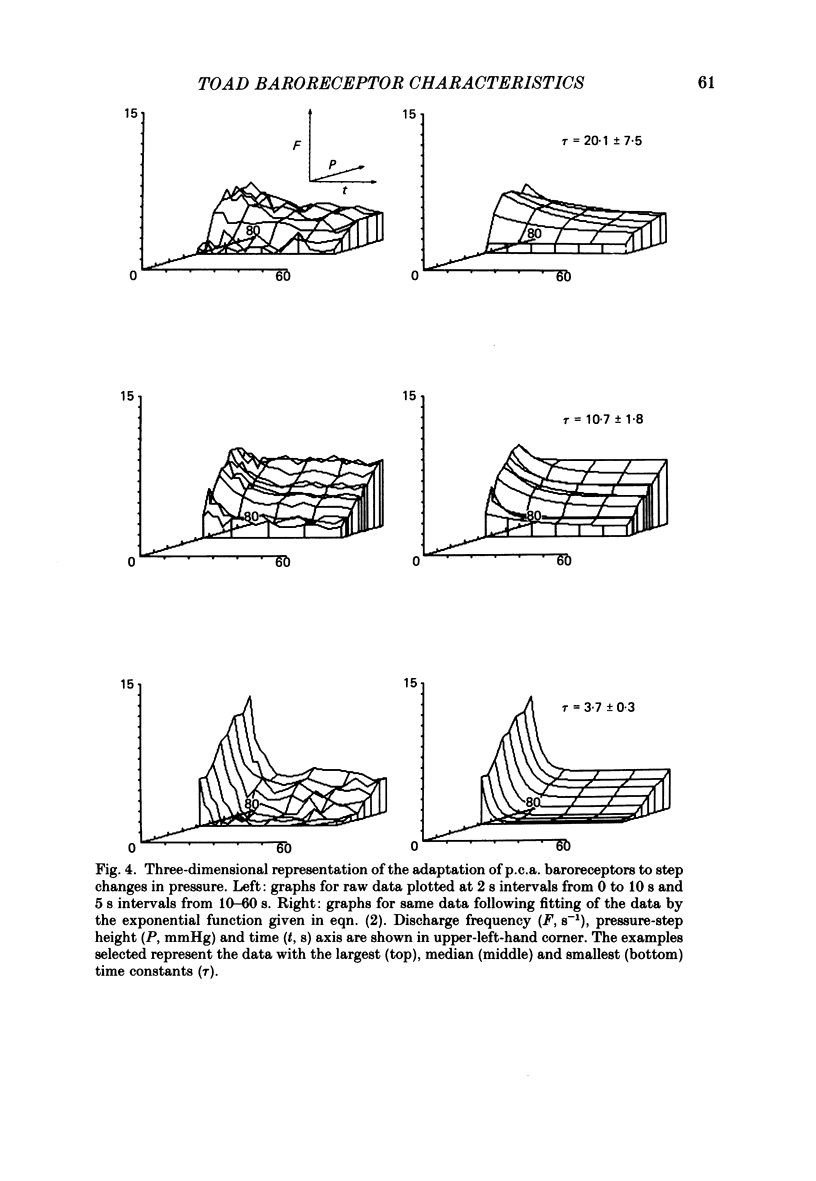
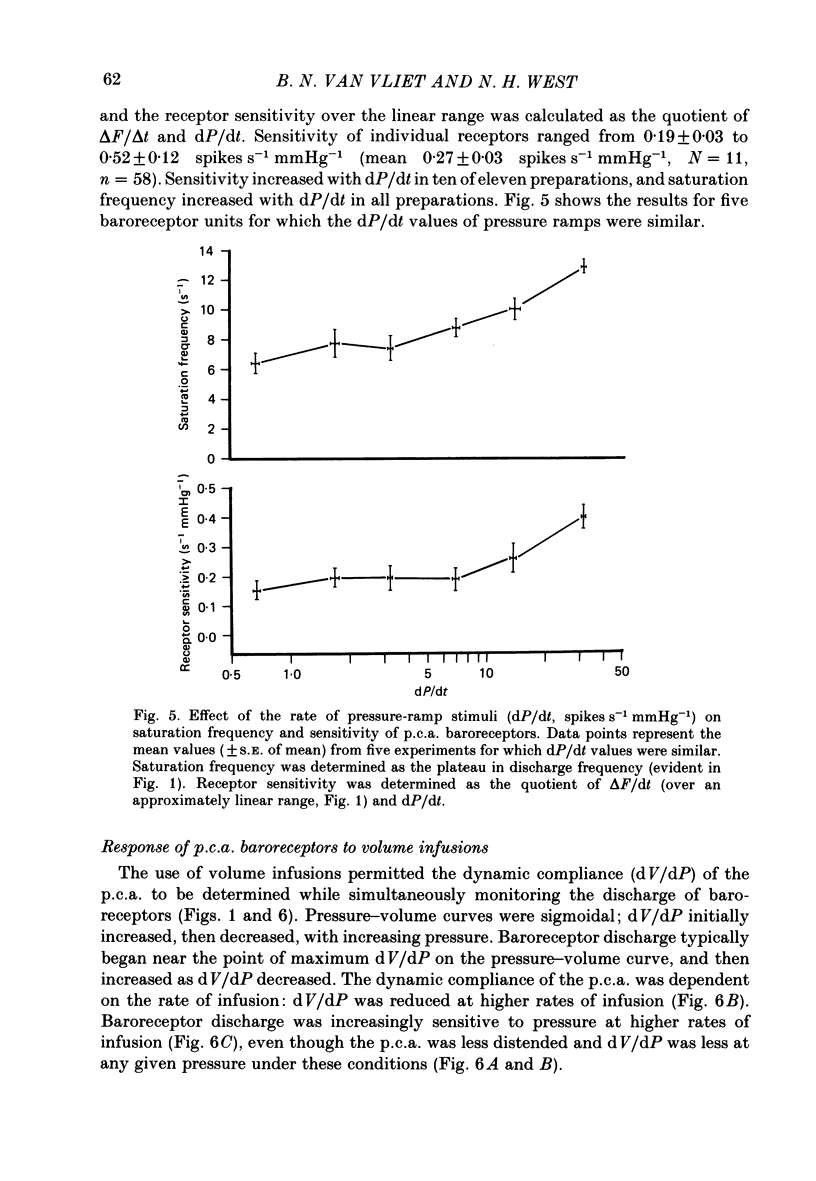
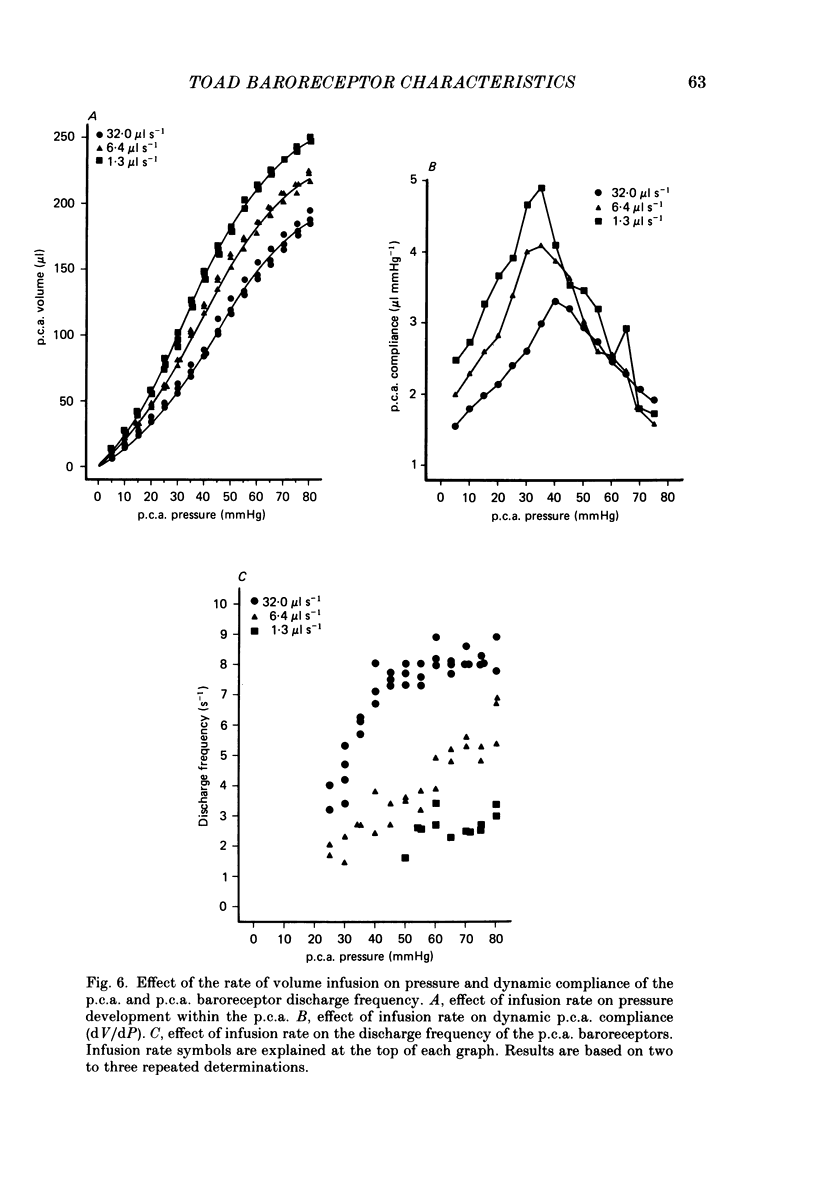
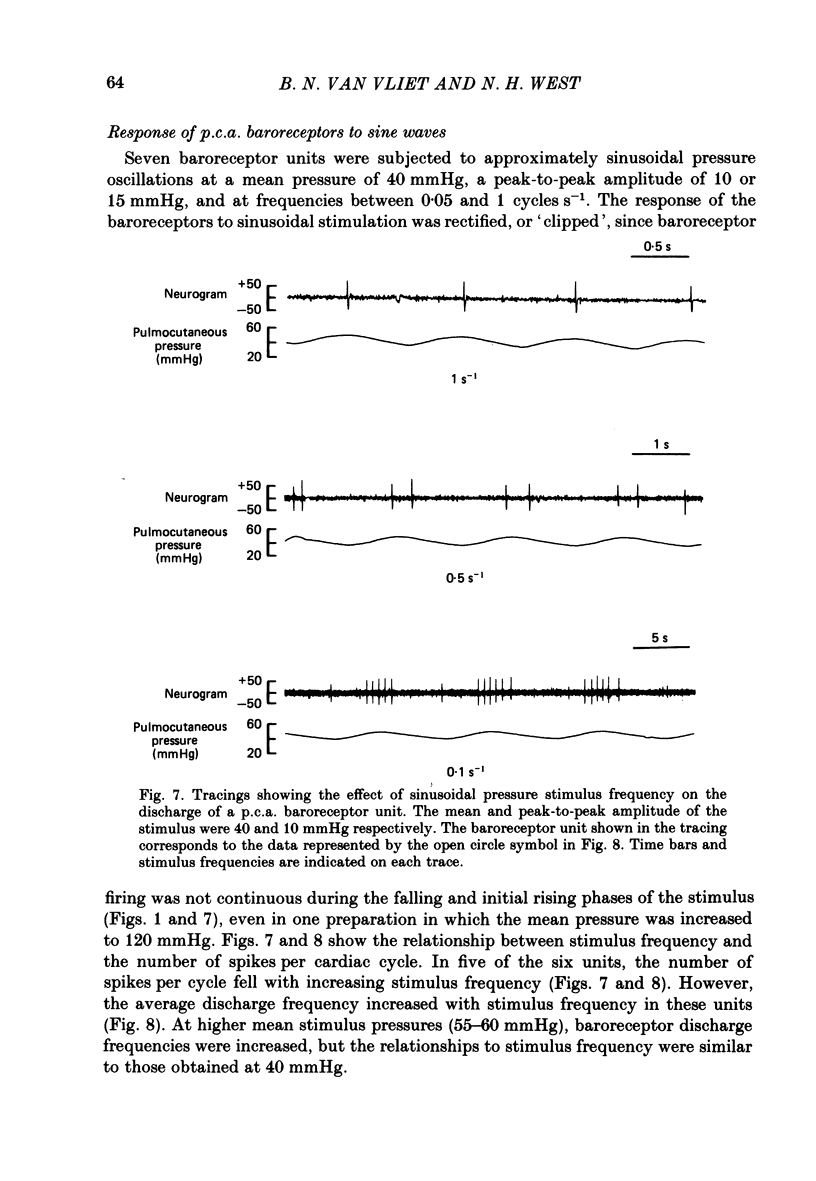
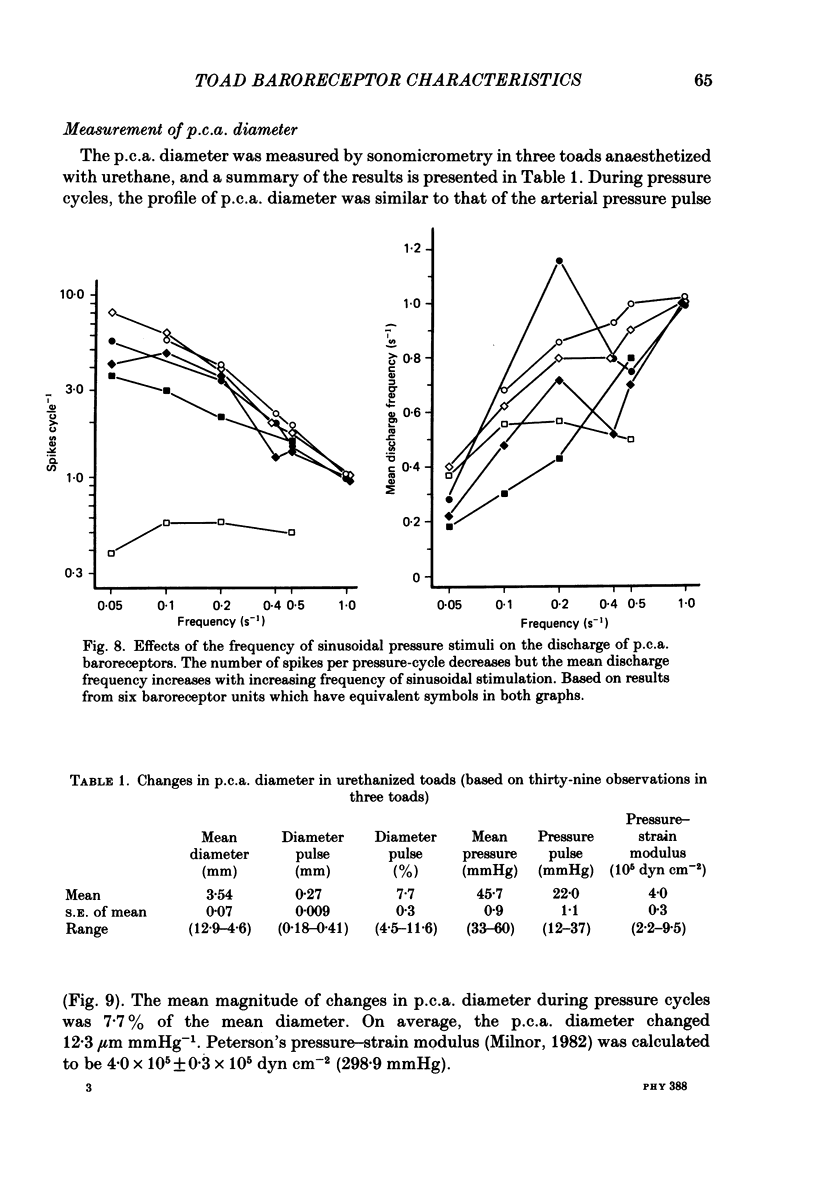
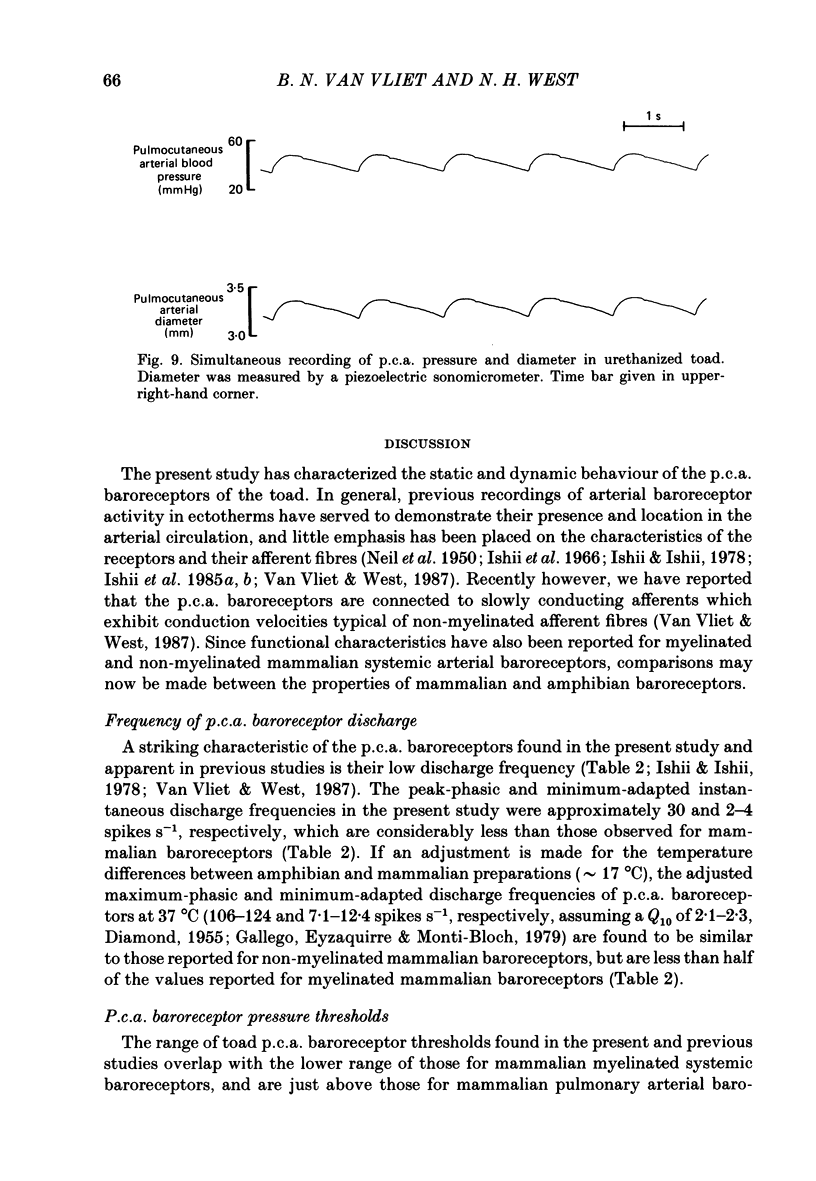
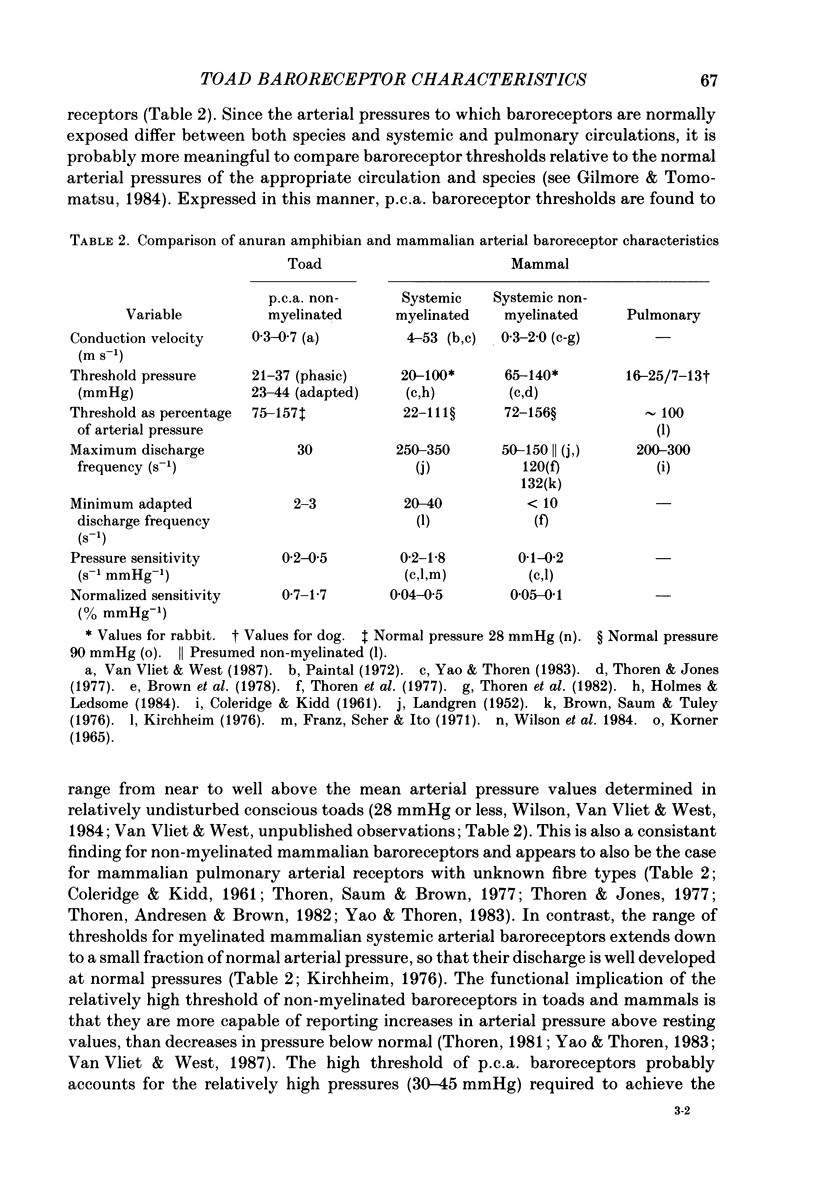
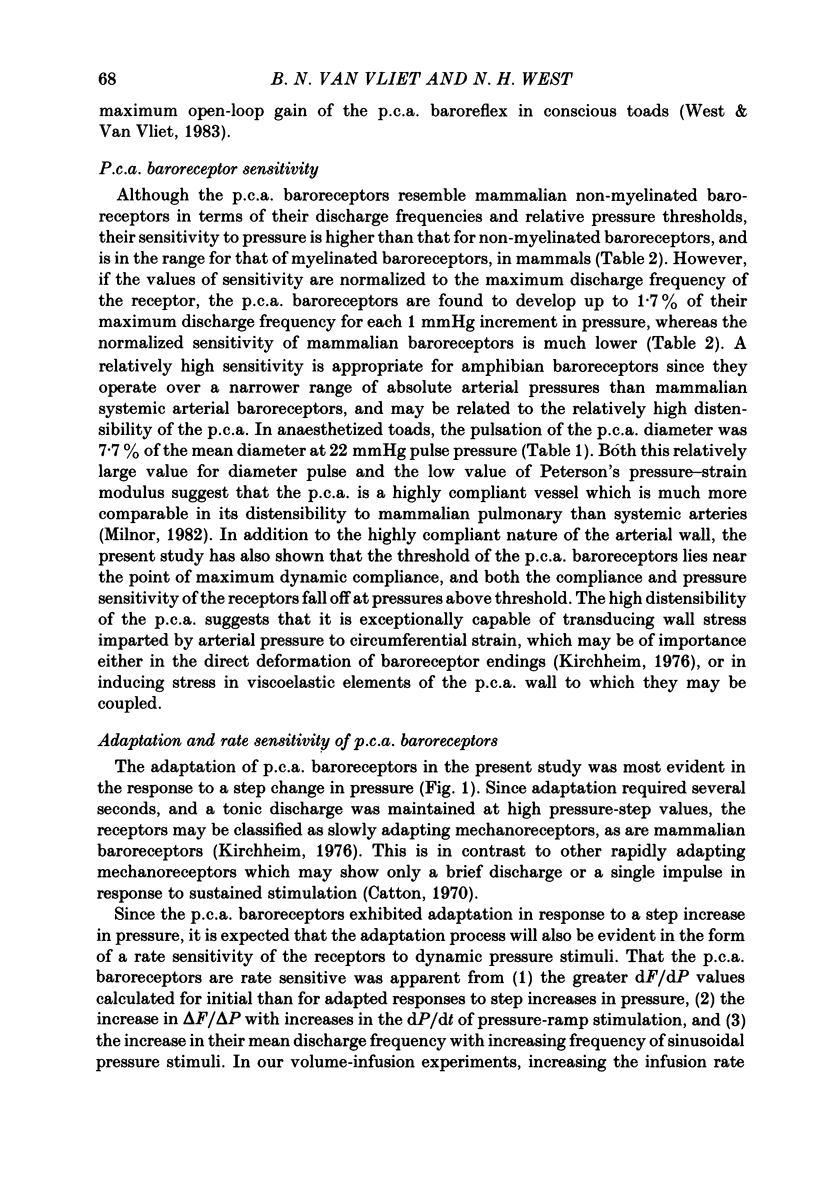
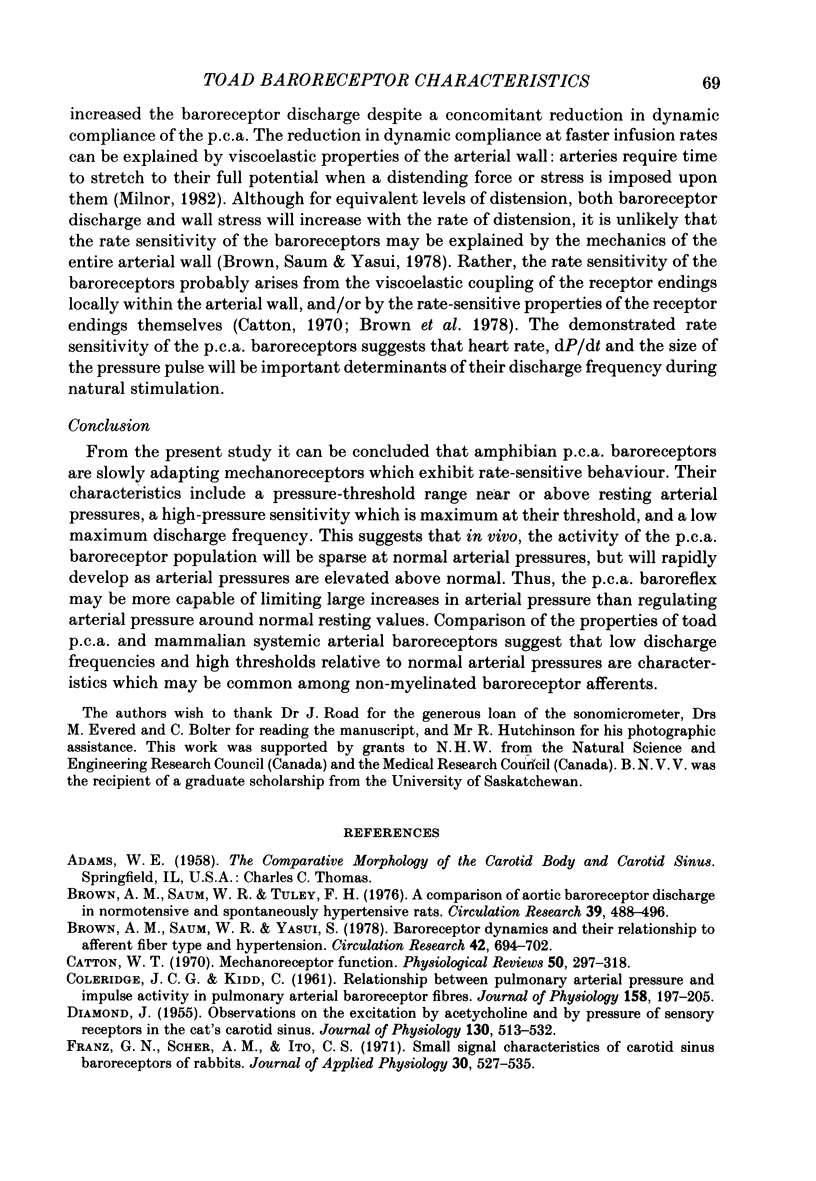
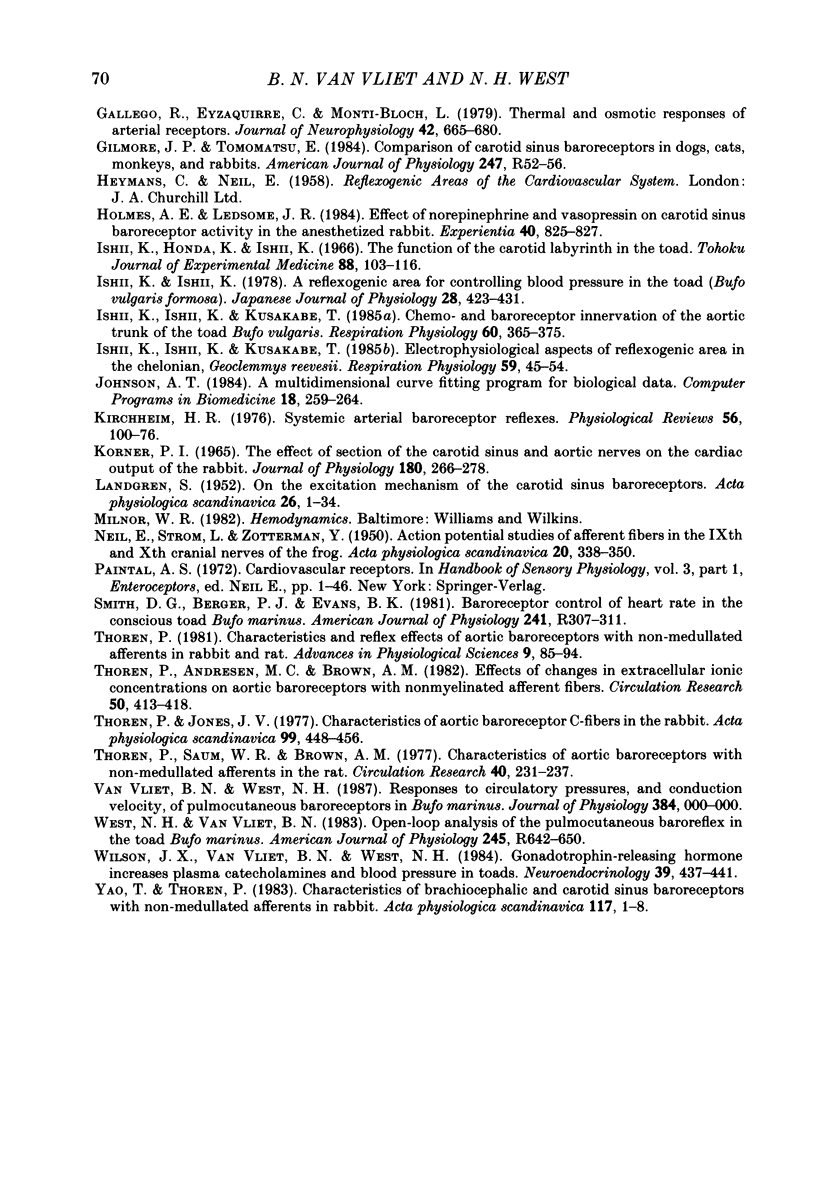
Selected References
These references are in PubMed. This may not be the complete list of references from this article.
- Brown A. M., Saum W. R., Tuley F. H. A comparison of aortic baroreceptor discharge in normotensive and spontaneously hypertensive rats. Circ Res. 1976 Oct;39(4):488–496. doi: 10.1161/01.res.39.4.488. [DOI] [PubMed] [Google Scholar]
- Brown A. M., Saum W. R., Yasui S. Baroreceptor dynamics and their relationship to afferent fiber type and hypertension. Circ Res. 1978 May;42(5):694–702. doi: 10.1161/01.res.42.5.694. [DOI] [PubMed] [Google Scholar]
- COLERIDGE J. C., KIDD C. Relationship between pulmonary arterial pressure and impulse activity in pulmonary arterial baroreceptor fibres. J Physiol. 1961 Sep;158:197–205. doi: 10.1113/jphysiol.1961.sp006764. [DOI] [PMC free article] [PubMed] [Google Scholar]
- Catton W. T. Mechanoreceptor function. Physiol Rev. 1970 Jul;50(3):297–318. doi: 10.1152/physrev.1970.50.3.297. [DOI] [PubMed] [Google Scholar]
- DIAMOND J. Observations on the excitation by acetylcholine and by pressure of sensory receptors in the cat's carotid sinus. J Physiol. 1955 Dec 29;130(3):513–532. doi: 10.1113/jphysiol.1955.sp005424. [DOI] [PMC free article] [PubMed] [Google Scholar]
- Franz G. N., Scher A. M., Ito C. S. Small signal characteristics of carotid sinus baroreceptors of rabbits. J Appl Physiol. 1971 Apr;30(4):527–535. doi: 10.1152/jappl.1971.30.4.527. [DOI] [PubMed] [Google Scholar]
- Gallego R., Eyzaguirre C., Monti-Bloch L. Thermal and osmotic responses of arterial receptors. J Neurophysiol. 1979 May;42(3):665–680. doi: 10.1152/jn.1979.42.3.665. [DOI] [PubMed] [Google Scholar]
- Holmes A. E., Ledsome J. R. Effect of norepinephrine and vasopressin on carotid sinus baroreceptor activity in the anesthetized rabbit. Experientia. 1984 Aug 15;40(8):825–827. doi: 10.1007/BF01951973. [DOI] [PubMed] [Google Scholar]
- Ishii K., Honda K., Ishii K. The function of the carotid labyrinth in the toad. Tohoku J Exp Med. 1966 Feb 25;88(2):103–116. doi: 10.1620/tjem.88.103. [DOI] [PubMed] [Google Scholar]
- Ishii K., Ishii K. A reflexogenic area for controlling the blood pressure in toad (Bufo vulgaris formosa). Jpn J Physiol. 1978;28(4):423–431. doi: 10.2170/jjphysiol.28.423. [DOI] [PubMed] [Google Scholar]
- Ishii K., Ishii K., Kusakabe T. Chemo- and baroreceptor innervation of the aortic trunk of the toad Bufo vulgaris. Respir Physiol. 1985 Jun;60(3):365–375. doi: 10.1016/0034-5687(85)90064-7. [DOI] [PubMed] [Google Scholar]
- Ishii K., Ishii K., Kusakabe T. Electrophysiological aspects of reflexogenic area in the chelonian, Geoclemmys reevesii. Respir Physiol. 1985 Jan;59(1):45–54. doi: 10.1016/0034-5687(85)90017-9. [DOI] [PubMed] [Google Scholar]
- Johnson A. T. Multidimensional curve fitting program for biological data. Comput Programs Biomed. 1984;18(3):259–263. doi: 10.1016/0010-468x(84)90057-6. [DOI] [PubMed] [Google Scholar]
- Kirchheim H. R. Systemic arterial baroreceptor reflexes. Physiol Rev. 1976 Jan;56(1):100–177. doi: 10.1152/physrev.1976.56.1.100. [DOI] [PubMed] [Google Scholar]
- Korner P. I. The effect of section of the carotid sinus and aortic nerves on the cardiac output of the rabbit. J Physiol. 1965 Sep;180(2):266–278. doi: 10.1113/jphysiol.1965.sp007702. [DOI] [PMC free article] [PubMed] [Google Scholar]
- LANDGREN S. On the excitation mechanism of the carotid baroceptors. Acta Physiol Scand. 1952 Jul 17;26(1):1–34. doi: 10.1111/j.1748-1716.1952.tb00889.x. [DOI] [PubMed] [Google Scholar]
- NEIL E., STROM L., ZOTTERMAN Y. Action potential studies of afferent fibers in the 9th and 10th cranial nerves of the frog. Acta Physiol Scand. 1950 May 30;20(4):338–350. doi: 10.1111/j.1748-1716.1950.tb00710.x. [DOI] [PubMed] [Google Scholar]
- Smith D. G., Berger P. J., Evans B. K. Baroreceptor control of heart rate in the conscious toad Bufo marinus. Am J Physiol. 1981 Nov;241(5):R307–R311. doi: 10.1152/ajpregu.1981.241.5.R307. [DOI] [PubMed] [Google Scholar]
- Thoren P., Andresen M. C., Brown A. M. Effects of changes in extracellular ionic concentrations on aortic baroreceptors with nonmyelinated afferent fibers. Circ Res. 1982 Mar;50(3):413–418. doi: 10.1161/01.res.50.3.413. [DOI] [PubMed] [Google Scholar]
- Thoren P., Jones J. V. Characteristics of aortic baroreceptor C-fibres in the rabbit. Acta Physiol Scand. 1977 Apr;99(4):448–456. doi: 10.1111/j.1748-1716.1977.tb10397.x. [DOI] [PubMed] [Google Scholar]
- Thorén P., Saum W. R., Brown A. M. Characteristics of rat aortic baroreceptors with nonmedullated afferent nerve fibers. Circ Res. 1977 Mar;40(3):231–237. doi: 10.1161/01.res.40.3.231. [DOI] [PubMed] [Google Scholar]
- West N. H., Van Vliet B. N. Open-loop analysis of the pulmocutaneous baroreflex in the toad Bufo marinus. Am J Physiol. 1983 Nov;245(5 Pt 1):R642–R650. doi: 10.1152/ajpregu.1983.245.5.R642. [DOI] [PubMed] [Google Scholar]
- Wilson J. X., Van Vliet B. N., West N. H. Gonadotropin-releasing hormone increases plasma catecholamines and blood pressure in toads. Neuroendocrinology. 1984 Nov;39(5):437–441. doi: 10.1159/000124017. [DOI] [PubMed] [Google Scholar]


